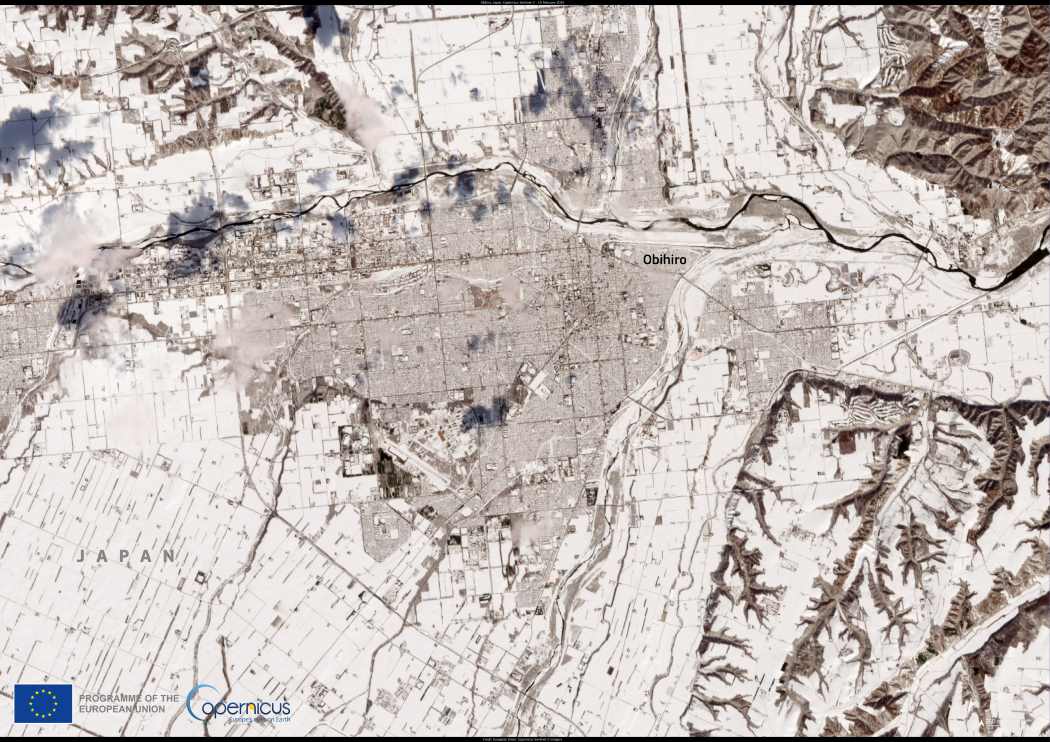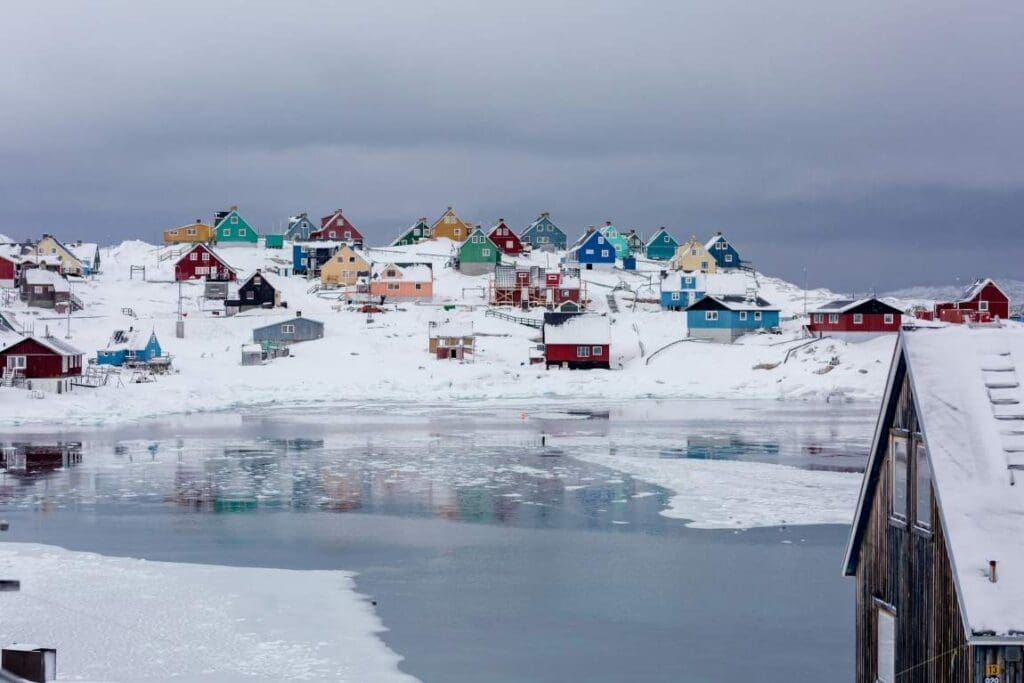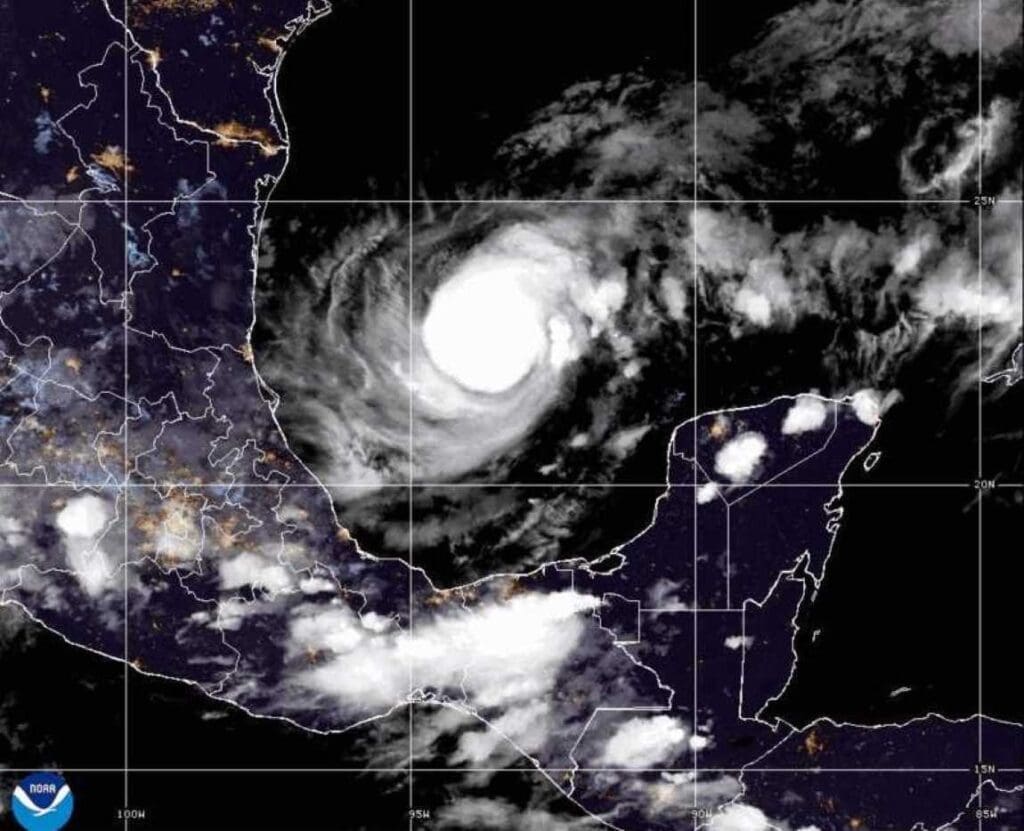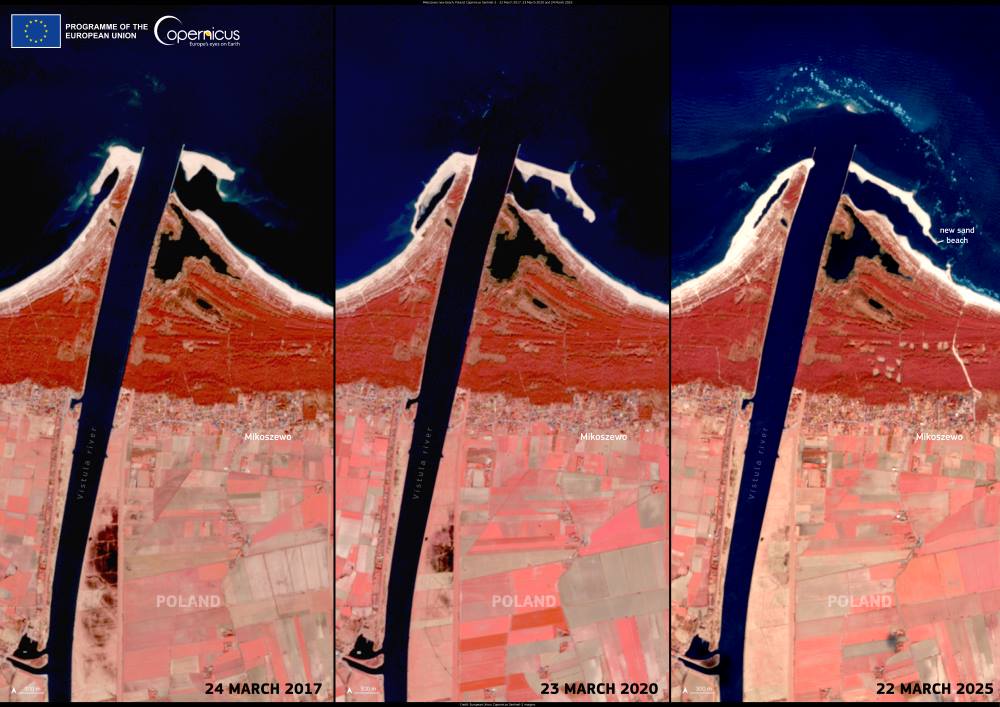In early February 2025, northern Japan was struck by a powerful cold front, described by the national meteorological agency as the strongest in several years. The cold snap caused heavy snow to blanket large parts of the region, disrupting transportation and leaving residents to grapple with significant snowfall.
Hokkaido, Japan’s northernmost island, and areas along the Japan Sea coast were particularly affected, leading to widespread cancellations of flights and train services. As of February 10, at least four fatalities had been reported due to the severe weather.
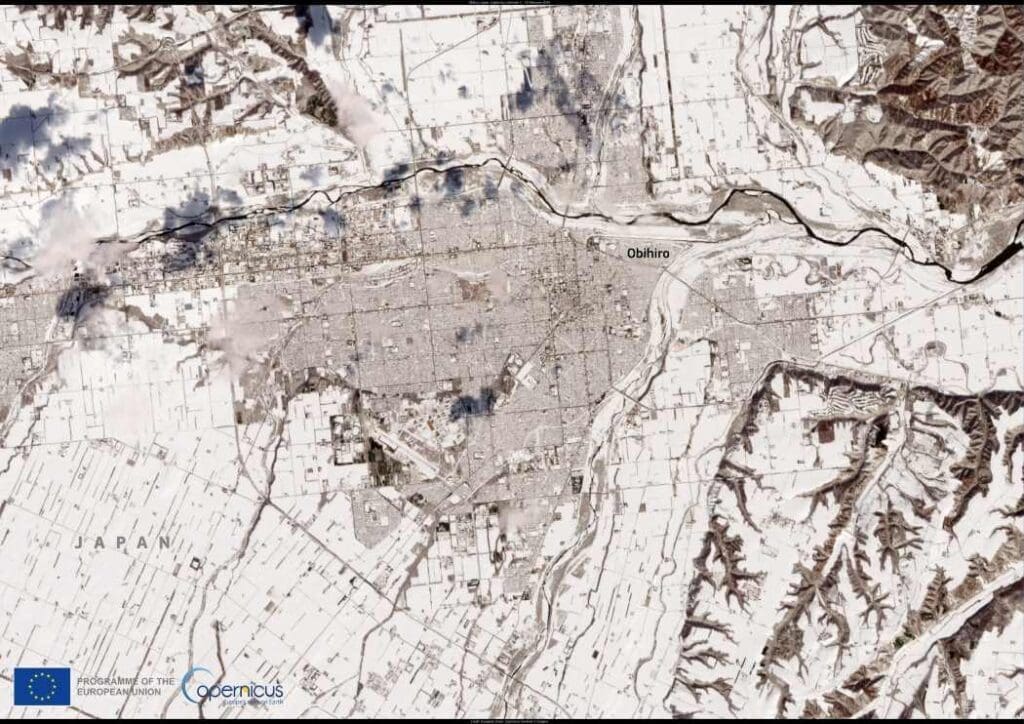
This image, captured by the Copernicus Sentinel-2 satellite on February 10, 2025, shows the city of Obihiro in Hokkaido, completely covered by snow. The Copernicus Sentinel satellites, which provide free and open data, are crucial for monitoring snow cover globally. Their images help local authorities and emergency services assess the impact of such severe weather and coordinate response efforts.
The snowfall in Hokkaido and the Japan Sea coast came after several days of extremely low temperatures. In some areas, like Shirakawa in Gifu Prefecture, up to 129 cm of snow fell in just 48 hours, marking a record for the region. The snowfalls also reached nearly a metre in parts of Niigata Prefecture and Hokkaido.
The snowstorm has been one of the heaviest seen in recent years, compounding the challenges for Japan’s transportation systems and public safety. While some regions typically experience snowfall in winter, this event has been unusually intense, especially in areas where heavy snow is rare.
Featured image credit: European Union, Copernicus Sentinel-2 imagery

